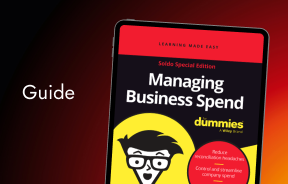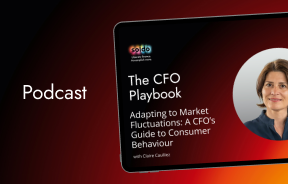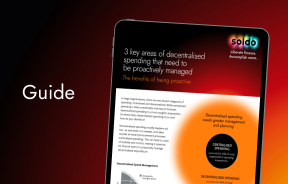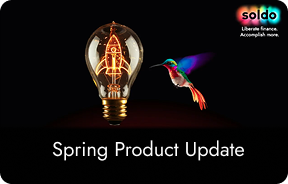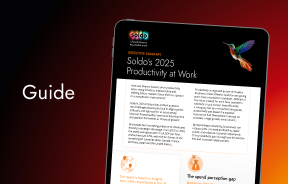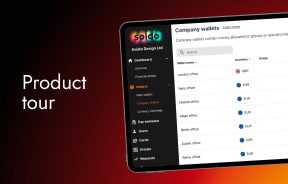Episode Summary
Technical expertise is just one skill financial experts need to hone. Successful CFOs — including Ken MacAskill — will tell you that you also need to be able to take a step back and see the bigger picture.
To do this, first you have to learn the ins and outs of the business.
Ken admits that he wishes he’d built this mindset earlier in his 20-year career, which has seen him working with multiple emerging and high-growth companies. He’d already been CFO at five companies before joining SaaS company Snyk in 2019.
Ken says that understanding that business element takes patience. Don’t rush the process. He describes his own journey as an evolution. With each project, he learned something new, and used that insight to inform the way he approached whatever came next.
It’s not only your own role you can learn from. Find out more about your colleagues’ jobs and experience, and how you all intersect on a large scale.
Ultimately, a good CFO sees the company through the lens of growth. This growth mentality has been integral to Ken’s development over the course of his career, and it’s one he encourages emerging CFOs to keep in mind.
One of the most important things you as a financial head can do to help that process is make sure you’re not underfunding it. Look ahead to where your company is aiming to be, and plan accordingly to meet those targets.
On this episode of The CFO Playbook, Ken shares his mindset shift, his methodology for achieving success as a CFO, and what to look at when funding growth in the business.
Guest Analysis
Name: Ken MacAskill
What he does: Since 2019, Ken has been CFO of Snyk, an open source security platform. Over his 20-year career he has served as CFO at multiple fast-growing software companies, seeing several through acquisitions.
Key Quote: “The venture-based world is fast-paced, it’s problem-solving, it’s being able to do many things right at the same time. So I think that ability to create my own chaos has served me well.”
Where to find Ken: LinkedIn
From Ken’s Playbook
The more you know about the business, the more you can contribute.
Ken’s approach to his work shifted when he realized he had technical knowledge but didn’t know much about dealing with business-centric concepts — like investors and the company’s bank account. When making the transition onto the executive team, be patient as you improve your knowledge about the business. Understand how your department can be a part of solving problems for the company.
Invest strategically into the company’s growth.
It’s important to think about investing in advance, so you don’t underfund the company when it needs to grow. Plan out where your company is going, and invest money in items that will be involved in that vision.
Understand your work internally first.
Know your financial planning and analysis models inside and out before bringing them to your board or external stakeholders. Being able to talk about your work in an informed way will help everyone get on the same page and have a clearer path to move forward with important decisions.
Episode Highlights
Rethink how you see your role
“I don’t necessarily think I was successful on my first engagement [as CFO]. … I should have been trying to leverage the team, I should have been broadening out. I should have been adding resources. [If] you’re looking to progress into a CFO role by doing the books better, at the end of the day, you’re not necessarily adding the value to the executive team that you think you’re adding, because you’re not thinking about the business in that growth light.”
Keep track of key data to bring to stakeholders
“One thing that would be a great investment for a CFO to bring to the equation … is sales ops and data tracking week-to-week. There are 13 weeks in a quarter, and how you understand your pipeline, your pipeline generation and the linearity of the business will enable you to understand where you need those investments, how to forecast the business, and how you feel about those numbers that the board, the management team and the investors are asking you for.”
The cash flow benefits of SaaS
“The transition to SaaS has been great for startups, great for cash flow, because our model is to bill all of our contracts annually in advance. That’s not everybody’s business. Some businesses are monthly, which are equally fine. But it’s been a great model for cash flow, and in the past it’s been a great model for predictability over a perpetual lumpy sales process.”
Competitors can inform and inspire
“We like to look at top-tier companies. Partially it’s competitive, especially [competing for] how fast can you get to $100 million, or whatever number you want to pick. … It’s very exciting to share those metrics with the broader team, to motivate everybody about the path that you’re on. … [The metrics] are very motivating from that perspective, but they’re also very informative and inspiring.”
Don’t let meeting fatigue slow your pace
“I think you need to create a sense of urgency: I call it compete-to-win. It’s easy to not do something. Days can be long: it’s easy to cancel that one-on-one, it’s easy to push off that thing, but it doesn’t move you forward. I always feel better sticking to the agenda, having those meetings … you always find them [more] rewarding at the end than canceling them.”
Top quotes:
“Right now, our focus at Snyk has been making sure we’re not underfunding the growth. Make sure you’re not overly focused on leverage and down to the productivity numbers when your top line numbers and your growth is what it is. If those metrics are good and you have the cash flow, make sure you’re investing far enough ahead. That’s a difficult balance to think about.”
“Having a lens about what you’re trying to do and how you can get to where you need to go while playing within the boundaries is important. You have to be thoughtful and you have to listen and figure out exactly the solutions that you need.”
“Focus on the business, understand the business, and learn the business, number one. Number two, build your relationships with the executive team, with the investors, and beyond — as broad as you can get them. And get involved with the business wherever it makes sense.”






